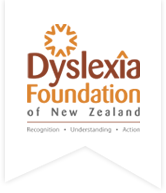
In the courts, DFNZ's focus is on youth justice. In simple terms, this is about ensuring youth with neurodisabilities and/or learning differences such as dyslexia are not entrapped in a system that treats them unfairly as adults. In line with this, DFNZ’s objective is to raise awareness of how neurodisabilities and learning differences impact the journey of individuals within the justice system and how this translates to over-representation of these youth in custody. And to advocate for key changes in the justice system to better respond to vulnerable youth.
In December 2016, the Government announced that the New Zealand Youth Court age would be raised to 18, with the change to be effective by 2019. This is a positive first step towards a more responsive court system for vulnerable youth. And a positive response to ongoing lobbying for an increase in the Youth Court age by a wide range of sector groups, including DFNZ. However, other key changes are necessary to ensure that vulnerable youth are recognised and appropriately responded to throughout the justice process.
For DFNZ, two such critical changes comprise improvements in the information made available to the court on vulnerable youth, and a greater focus on equipping police to be able to recognise, accommodate and manage interactions with vulnerable youth.
In terms of information, DFNZ contends that information on neurodisabilities should be made transparent in the Youth Court by way of a mandatory educational psychologist’s report. Currently, reporting on this relies on the young person’s school (if they attend one) having identified these issues. In low decile schools particularly, this is often not the case. Making an educational psychologist’s report a compulsory requirement would alert all parties to the increased vulnerability of specific individuals when it comes to comprehending court process and discerning the consequences.
In terms of police knowledge, front line police must be equipped with better knowledge as to how dyslexia, learning difference, communication disorders, and other neurodisablities present and how best to manage this. Simple changes that make a big difference would include keeping questions short and simple; addressing one issue at a time; and making sure not to ask multiple questions all at once.
People with neurodisabilities are especially vulnerable when they come into contact with the justice system. This is evidenced by the significant over-representation of individuals with neurodisabilities in both the adult and youth justice systems. In New Zealand, an estimated 65-70% of offenders that come before the Youth Court are not formally engaged within the education system. And results from a Ministry of Education screening tool trialed in 2008 on 197 prison inmates showed that 90% were not functionally literate and 80% were not functionally numerate. Looking at dyslexia alone, an estimated 10% of the New Zealand population is dyslexic, yet percentages climb as high as 90% in our prisons.
Neurodisabilities range from learning differences such as dyslexia and communication disorders through to attention deficit hyperactive disorder (ADHD), autism spectrum disorder (ASD), traumatic brain injury (TBI), epilepsy and foetal alcohol syndrome disorder (FASD). Vulnerability can be due to a number of factors. These can include different degrees of comprehension and social (dis)comfort due to low reading age, limited literacy skills, slower cognitive processing speeds and comprehension, impaired or heightened auditory and visual perception, poor short-term memory and variable concentration, reduced ability to understand procedures and follow instructions, inability to comprehend cause and effect and/or consequences. As well as behavioural propensities that can be mistakenly interpreted as hostility, acting out or evidence of guilt. See DFNZ’s neurodisabilities checklist for more on this.
Importantly, neurodisabilities do not discriminate – they cross over socio-economic, ethnic, and cultural boundaries. It is estimated that up to 80% of young people in the Youth Court have at some point been subject to a Child, Youth & Family (CYF) notification. It is likely that, in many of these cases, family circumstances are underpinned or compounded by neurodisabilities. FASD, for example, can be intergenerational. This is also the case with a range of other neurodisabilities.
Co-morbidity is also common. Dyslexia, for example, can be co-morbid with autism, attention deficit hyperactivity disorder (ADHD), dyspraxia, dysgraphia and other disorders. Some neurodisabilities, ADHD for example, reduce an individual’s ability to assess risk and make them more prone to behaviours that may result in traumatic brain injury, which research has shown can be a marker for propensity to offend.
Due to these factors, over-representation of individuals with neurodisabilities in the justice system could also be seen to represent the criminalisation of mental health issues, with our prisons acting as quasi mental health institutions. It must be acknowledged that where young persons with neurodisabilities commit criminal offences, they have caused harm to victims and society and need to be held accountable, but this must be done in a manner that they understand, reflects their disability, and where appropriate support/rehabilitation/reintegration can be ensured.
If youth offending is the dis-ease, education is clearly the best preventative. And if prison is the ambulance at the bottom of the cliff, school is the community health clinic. Direct correlations between learning differences/neurodisabilities and youth offending have been well documented. In 2012, the Children's Commissioner for England published a report which ("Nobody Made the Connection: The prevalence of neurodisability in young people who offend", Nathan Hughes et al) showed 43-57% reported prevalence of dyslexia amongst young people in custody, 23-32% learning disabilities, 60-90% communication disorders. In 2014 in New Zealand, Auckland University's Kate Peirse O'Byrne published the first comprehensive analysis of neurodisability and youth offending specific to New Zealand. In a special report published in the Youth Court journal, Issue 67, she noted that failing to take account of neurodisability in responding to offending was indefensible.
Children’s Commissioner Judge Andrew Becroft has identified improving children’s engagement in education and improving conditions in the youth justice system as two of the office’s top five priorities for 2017. He is also continuing to advocate for vulnerable young people in the court system, and is calling for a law change to stop young people being held in police custody following a first court appearance. Judge Becroft says young people held in police cells (150 in 2016) are likely to experience poor hygiene facilities, inadequate food, round-the-clock lighting and limited access to appropriate support. This can quickly lead to physical, mental and emotional harm, so much so that adults are not usually held in police custody following their first court appearance.
In his former role as Principal Youth Court Judge, Andrew Becroft was a leading proponent of education as a protective factor against youth offending and in recent years had highlighted increasing concerns as to the number of young offenders who have slipped through the educational net because of undiagnosed learning disabilities. He also noted that schools and teachers are 'firstline crime fighters' with the best chance of helping youths out of a cycle of crime, and that young people outside the school system are virtually the whole of the problem in Youth Court. International dyslexia expert Neil Mackay is also a proponent of education as a preventative. His ironic nine-step guide to 'How to Create a Criminal',outlines what the New Zealand education system does wrong for dyslexic students.
Quick Links
NZ Children’s Commissioner
Andrew Becroft’s top five
priorities for 2017
Click here to download (pdf)
Law change needed to stop
young people being held in
police custody – NZ Children’s
Commissioner Andrew Becroft
Click here to download (pdf)
2016 Neurodisabilities Forum report and Neurodisability Tendencies Checklist available now.
Find out more...
Neurodisability and youth offending – the New Zealand connections
Find out more...
The Children's Commissioner of England and Wales report – ‘Nobody made the connection: The prevalence of neurodisability in young people who offend’
Click here to download
Advocates for vulnerable youth
Find out more...
Judge Andrew Becroft
on youth offending
and education
Find out more...
Dyslexia expert Neil Mackay’s
Ironic guide on how to create
a criminal with ‘ mis-education’
Click here to download
General Links
The DFNZ Dyslexia brochure
Learn more about Dyslexia in New Zealand
Click here to download
Parenting by the Stars
Well known New Zealanders talk about parenting
Find out more...
Media Coverage and Events
Our latest media activity
Find out more...
The Big Picture
An inspiring documentary that challenges common myths about dyslexia
Find out more...




















